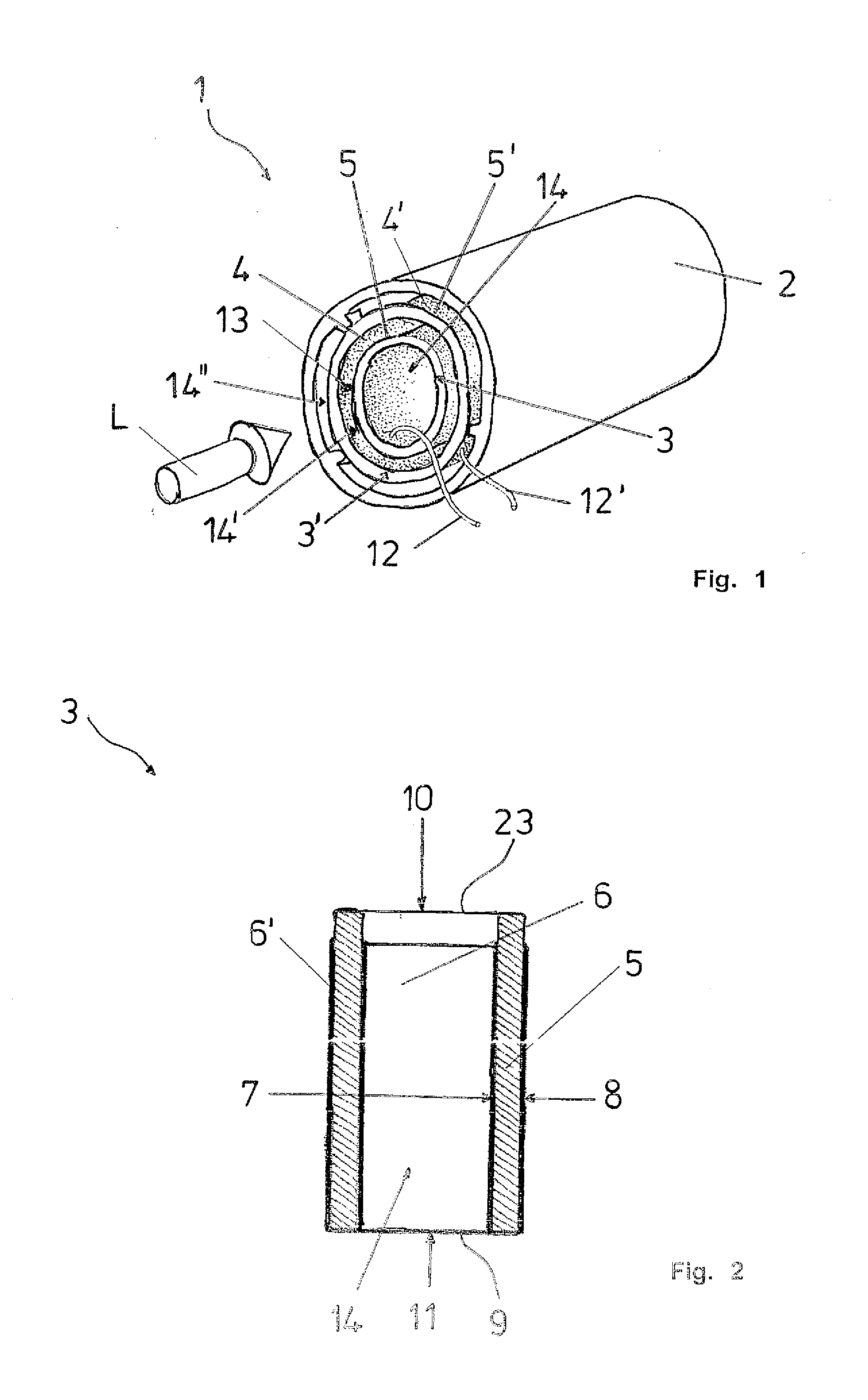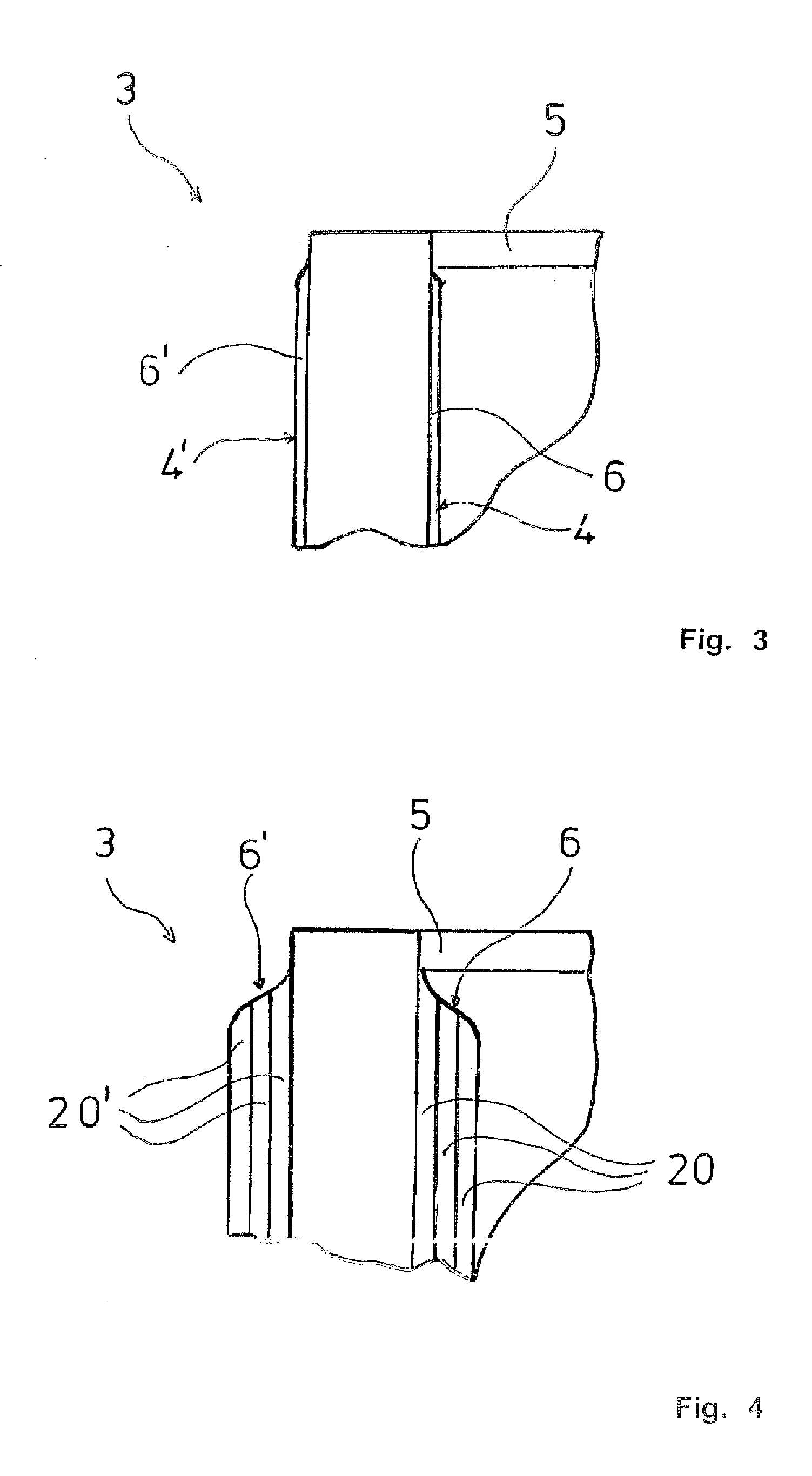Heating element for a hot air device
a technology of heating element and hot air device, which is applied in the direction of air heaters, electric heating, fluid heaters, etc., can solve the problems of reducing airflow, destroying the heating element, and high cost per unit, so as to prevent a large change of resistance value, prevent crack formation, and maintain the effect of adhesion
- Summary
- Abstract
- Description
- Claims
- Application Information
AI Technical Summary
Benefits of technology
Problems solved by technology
Method used
Image
Examples
Embodiment Construction
[0029]FIG. 1 shows an implementation of the heating element 1 according to the invention with heating resistors 3, 3′ in a view towards the air inlet side 10 for an airflow L. The two heating resistors 3, 3′ that are essentially tube-shaped are arranged, one nested inside the other, in a holding tube 2, and have carrier elements 5, 5′ that are arranged coaxially one inside the other and have heating conductors 4, 4′.
[0030]Like the holding tube 2 and the carrier elements 5, 5′, the heating conductors 4, 4′ are made completely of ceramic material; the holding tube 2 and the carrier elements 5, 5′ are made of an insulating ceramic material and the resistance layers 6, 6′ of the heating conductors 4, 4′ are made of an electrically conductive ceramic material. The resistance layers 6, 6′ have a small cross-sectional area and extend over the inner surfaces 7, 7′, the outer surfaces 8, 8′, and over the faces 9, 9′ of an air outlet side 11 of the heating resistors 3, 3′ of the heating eleme...
PUM
| Property | Measurement | Unit |
|---|---|---|
| conductive | aaaaa | aaaaa |
| electrically conductive | aaaaa | aaaaa |
| electric power | aaaaa | aaaaa |
Abstract
Description
Claims
Application Information
 Login to View More
Login to View More - R&D
- Intellectual Property
- Life Sciences
- Materials
- Tech Scout
- Unparalleled Data Quality
- Higher Quality Content
- 60% Fewer Hallucinations
Browse by: Latest US Patents, China's latest patents, Technical Efficacy Thesaurus, Application Domain, Technology Topic, Popular Technical Reports.
© 2025 PatSnap. All rights reserved.Legal|Privacy policy|Modern Slavery Act Transparency Statement|Sitemap|About US| Contact US: help@patsnap.com



